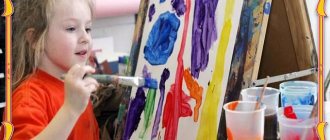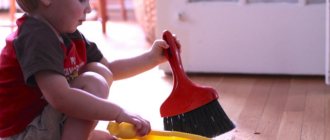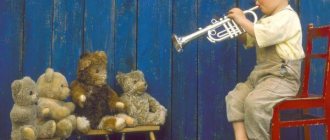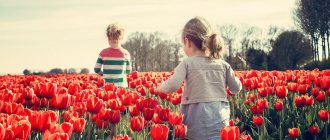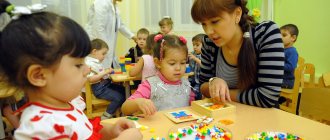Aesthetic education (EA) is an integral part of the formation, development and formation of personality. From the first years of life, a child begins to study art, beauty, virtue, the diversity of the surrounding world, society, therefore, it is at this age that a teacher must be able to competently organize the process of learning about the artistic sphere.
Clear objectives are set for each age group. The training program is developed on the basis of scientific data, focusing on a variety of art forms, taking into account modification and progression of each of them. New skills are taught in stages, with gradually increasing demands on students' knowledge.
The earlier the aesthetic effect is reproduced, the greater the chances of its effectiveness. The formation of an artistic culture of personality in preschoolers is effectively carried out during play activities. Children begin to actively imitate the standards of cultural communication, as well as behavior in society, and their perception and acceptance of the world around them consistently develops.
Apart from this, they have a great desire to observe and create art/beauty, which is otherwise called creative energy. Thanks to this phenomenon, special attention is paid to the problem of updating aesthetic education. After all, only culturally enriched and purposeful people are able to make a contribution to the development of world art.
The cultural integrity of the individual becomes the main factor for awakening the desire to transform, decorate, modernize the natural and objective environment, nature, society, since closeness to life is a paramount circumstance for a harmonious life.
Goals of aesthetic education
The main goal is the formation of an individual’s aesthetic culture. An aesthetically educated child develops virtuous, moral, and spiritual values; His knowledge about nature, society, and the essence of the world expands.
Various artistic activities develop character traits such as attentiveness, perseverance, and discipline. Therefore, the goals of EV should also include:
- the formation of a holistic personality capable of openly expressing one’s thoughts, speaking out, expressing oneself, sympathizing and empathizing in various life situations;
- the development of a highly moral, harmonized, multifaceted person, distinguished by his uniqueness from other individuals.
Theoretical foundations and methods of music education

During the period of artistic education, the following aesthetic components are formed, necessary for the generality and quality of the process:
- Perception is the ability to identify aesthetic features in everyday, cultural and social life. Subsequently, what is perceived is assessed by the individual according to personal criteria formed as a result of receiving emotional and intellectual experience.
- Feelings are the manifestation of emotions that arise as a result of interaction with another person, art, environment or society. Such feelings can cause pleasure, joy, inspiration, sadness or disgust. They are associated with more complex intellectual and emotional processes, and are also distinguished by their depth, variety, and complexity. But despite this, such persistent emotions are always in harmony with the mind.
- Interest is a person’s desire for new knowledge. The main criterion of aesthetic interest is whether an individual has favorite works of art, writers, composers; books that he often rereads; the presence of purposefulness in choosing the genre of music and literature.
Methods and means
In pedagogy, many methods have been developed to help develop a person’s taste. However, so far none of them can replace the personal example of loved ones. The psychological and moral environment in which a person lives and grows is also important. By personal example, the student learns the following things:
- Communicate;
- Take care of yourself;
- Treat yourself and others.
Other methods are closely related to the means by which the effectiveness of education is achieved. We list the most popular of them:
- Conversations;
- Creative workshops;
- Classes in clubs, sections;
- Visiting exhibitions, theaters, museums;
- Participation in festivals, competitions of intellectual and creative content;
- Home creative evenings.
We have already said that the success of aesthetic education largely depends on when it was started. The sooner a child begins to comprehend the beauty of the reality around him, the faster he will form the correct aesthetic ideals, which he will strive for throughout his life.
Play is the second most effective opportunity to educate a harmonious personality who knows how to appreciate beauty. Being part of the game scenario, its protagonist, the child accumulates correctly formulated aesthetic impressions and delves into the rules of moral behavior. The game prepares the individual to “enter” the life arena. The development of speech helps to form an idea of the richness of language and culture and instills the need for reading.
Participation in holidays, concerts, exhibitions is the next link in the development of taste through direct participation in the creation of beauty. Visiting theaters, museums, exhibitions, and concerts improves the inclinations of taste, forms and improves the aesthetic ideal.
Objectives of aesthetic education
The implementation of the previously listed goals is not possible without a clear formulation and implementation of a number of pedagogical tasks. They, in turn, are divided into two categories:
The first group is aimed at developing an aesthetic attitude in children. In this case, the following tasks must be performed:
- formation of the sensory side of personality;
- developing the ability to see beauty and uniqueness in people, objects, nature, art, society;
- acquaintance with the basic standards, individual cultural qualities and manifestations of personality, as well as the gradual introduction of new terminology into the student’s colloquial vocabulary;
- understanding the essence of beauty;
- education in students of unique features, ideas, reasoning, concepts that play an explanatory role in understanding all aesthetic components;
- emotional development – the ability to give an adequate reaction (joy, laughter, disappointment, agreement, etc.) in any situation.
Means of aesthetic education
The second group - pedagogical tasks are to encourage children to perform artistic and aesthetic activities, to develop and acquire certain skills and abilities. Various methods are used to introduce schoolchildren and preschoolers to art/culture (for example, drawing, modeling, singing, dancing, reading poetry). In addition, a desire is formed to bring and apply the acquired skills in real life.
Meaning
From the first days of life, children begin to explore the world around them. Kids are drawn to bright toys and look at colorful pictures. Art, even the simplest, is a source of joyful emotions.
At the same time, children appreciate everything beautiful. They analyze the shape of things, their sound (musical instruments). The emotional response to everything attractive occurs unconsciously. Therefore, in early preschool age, aesthetic education is closely related to sensory culture.
Since the baby’s physical abilities are still limited, he studies all objects with his eyes and hands. The combination of the lines of things and their colors allows the child to appreciate their attractiveness.
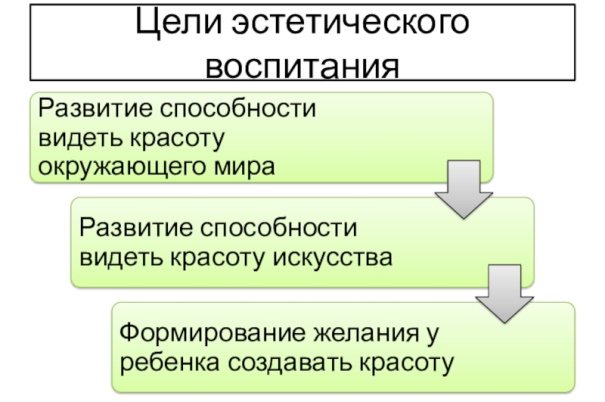
A feature of aesthetic education is that the child experiences joyful emotions from meeting a beautiful object. It evokes a range of positive experiences in a child’s soul. This contributes to better development of the child.
Contents of aesthetic education
The content of electronic learning includes the formation of skills, tastes, needs, interests, standards and assessments. As a result of a joint form of artistic activity, children gain new knowledge that helps them understand the essence and diversity of the world around them.
They learn to distinguish between good and bad, ugly and beautiful, good and evil, comic and tragic. Against the background of the acquired information, the concept of aesthetic culture comes as the most multifaceted, sublime area.
Preschoolers get acquainted with art from the first years of life, through arts and crafts architecture, sculpture, painting, and folk art. In kindergarten, children begin to actively engage in independent artistic activities - they draw, sculpt from plasticine, cut out crafts, sing, dance.
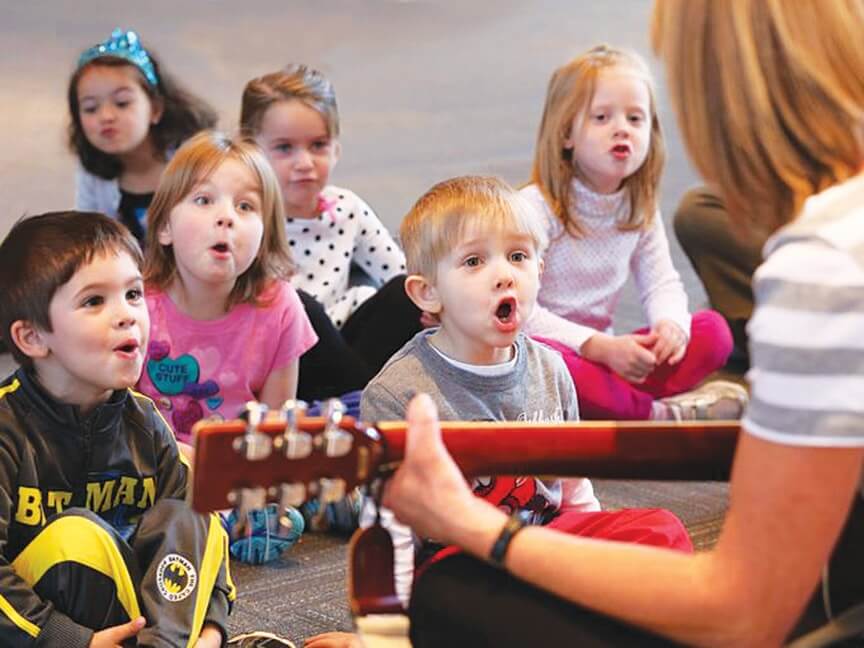
The teacher must provide the necessary conditions for comfortable and effective completion of tasks, provide support, and give students the right direction. A correct program, which includes a variety of forms of EV, guarantees the fulfillment of all functions and the comprehensive aesthetic development of the personality of a child of preschool and school age.
Under the clear guidance of a teacher or adult, children must understand the main criteria that serve as an assessment in the distinction between bad/good, sublime/ordinary, beautiful/ugly, in order to then apply the experience gained in later life.
What is ↑
The word “aesthetics” translated from ancient Greek means “sensory perception” and is the doctrine of the external form and internal content of beauty in nature, social life, and the inner world of man.
Aesthetic education is the development in a person of the ability to perceive, appreciate, analyze and create beauty in everyday life and art.
Here it should be clarified that the concept of “beautiful” in the context of the artistic formation of personality does not coincide with the meaning of the words “beauty, beautiful.” The latter is rather a description of the external form, which depends on a specific historical era and may change.
“Beautiful” is independent of time and includes such concepts as harmony, humanism, perfection, sublimity, spirituality.
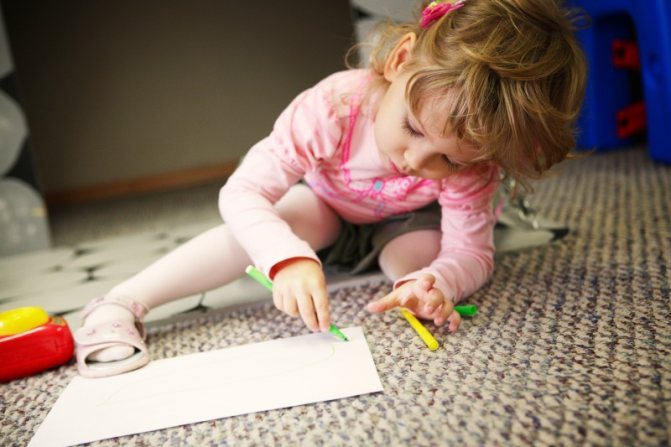
Working with parents
Aesthetic and artistic education of preschool children is a complex process that requires interaction between parents and teachers. If they have different methods of influence or legal representatives do not pay enough attention to this area of education, then the child will not receive the necessary knowledge.
Often parents do not understand how to instill aesthetic taste in their children. The teacher must help them understand the essence of the educational process. To do this, you can conduct consultations or master classes.
Creative tasks
Various competitions are often held in preschool institutions. For example, you need to make a birdhouse or make a craft from natural material. To do this, the teacher communicates with parents and explains the goals and objectives of this event.
It is important to convey to adults that they must do any thing together with their children. This will not only improve the climate in the family, but will also develop the child’s creative abilities.

Principles of organizing the competition:
- The teacher develops a plan. It includes the duration of the event, the rating system, and work requirements.
- Competently draws up instructions for parents to follow.
No one should be forced to participate. Parents and children themselves must take the initiative. In order for as many families as possible to participate, the teacher must initially interest the children. For example, during a walk, the teacher tells them about birds and what kind of houses they have.
After this, the group shows examples of birdhouses. Then he says that everyone can make such a house themselves. Interested children persuade their parents to participate in the competition.
Master classes
Not all adults have developed creative abilities. Therefore, the teacher conducts a master class on creating some kind of craft at least once a month. It could be a doll made from scraps, an interesting drawing, or a craft made from scrap materials.
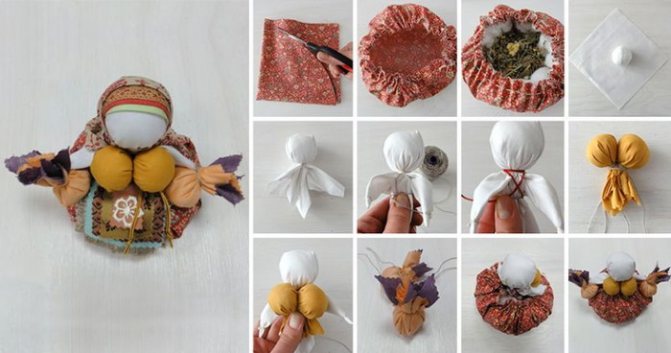
The teacher chooses the topic independently, taking into account the age of the children. This is necessary so that parents can incorporate the experience gained into their child’s education at home.
Consultations
Consultation on the need for aesthetic education should take place regularly. In order to enhance diversified development, teachers introduce parents to exhibitions, concerts, and events held in their locality.
For example, if a local museum is hosting an exhibition of folk art, you can make a bright poster and hang it on the doors of the group. The information sheet indicates the venue, opening hours and other necessary details.
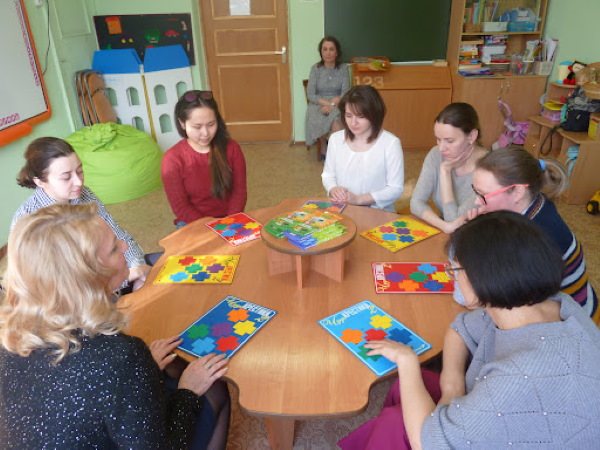
It is necessary to explain to parents that learning should not end after leaving the kindergarten to go home. Consultations are held on various topics. With the arrival of autumn, they help parents teach their children to see the beauty in nature. For example, while going home you can collect a bouquet of yellow leaves,
Aesthetic and artistic culture of personality
The importance of aesthetic and artistic development of the individual as an important lever of social progress increases during transitional periods that require increased creative activity from a person and the strain of all his mental powers. This is exactly the stage our country is going through now. Lasting strength in implementing reforms is determined not least by the aesthetic potential of society and living generations. It is this circumstance that makes the problem of forming an individual’s aesthetic and artistic culture and creating favorable conditions for this extremely relevant.
It is important to effectively resist the tendency to push the aesthetic environment into the background, to the periphery of conscious tasks. This has very dangerous consequences, leading to the impoverishment of the cultural life of society and the spiritual degradation of its constituent individuals. None of the purely material achievements to which present reformers are inclined to direct their attention is, of course, worth such a price.
It can also be argued that without the inclusion of the aesthetic factor in the reforms being carried out, their social and human effectiveness will be negligible.
Aesthetic education of the individual begins with the first steps of a little person, with his first words and actions. There is nothing like an environment that doesn't leave an imprint on your soul for the rest of your life. Communication with parents, relatives, peers and adults, the behavior of others, their mood, words, looks, gestures, facial expressions - all this is absorbed, transferred, and fixed in the mind.
Aesthetic education occurs at all stages of personality development. The sooner it enters the sphere of targeted aesthetic influence, the more reason to hope for its effectiveness.
What should aesthetic education be like in order to influence the full formation of personality, and on what criteria does it depend? What is aesthetic and artistic culture as a phenomenon of social life and individual consciousness?
Aesthetic culture is a manifestation, concretization of culture as a whole. Culture is understood, first of all, as the content and process of people’s activities, the result of their active and purposeful, although not always purposeful and successful, productive social activity.
Culture acts as one of the leading attributes of planetary civilization; it distinguishes human life from the life of other living beings on Earth and possible extraterrestrial civilizations.
Culture is the main, historically stable indicator of human creative activity, a correlator of the level and quality of development of communities and individual peoples, a criterion for assessing the historical path and prospects of large social units, of each individual person. Culture is “second nature.”
This model, with some amendments to the massization of production and the deepening division of labor and specialization, is still relevant today.
Mastery, artistic flair, skill and inspiration allow modern ordinary workers to achieve often amazing results, which gives grounds to qualify their work as an activity according to the laws of beauty.
All the above facts about aesthetic and artistic culture lead us to the conclusion about the extreme importance of its purposeful formation in people, about the place and role of aesthetic and artistic education in the social reproduction of man.
